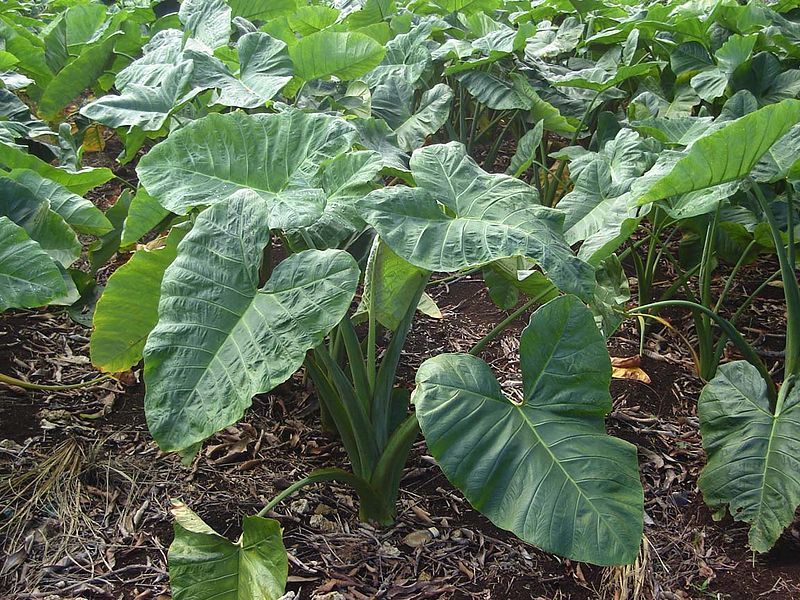
How an Arrowroot Farmer is raking profits in Kisii
Instead, he decided to venture into arrowroot (nduma) farming in Kegati village, Nyaribari Chache constituency, where he hails from
Most residents in Kisii County often set aside the lower part of their farms near rivers or water bodies to plant Eucalyptus trees, however, Mr. James is focused on making it big with his arrowroot farm renowned as ‘nduma’. After the cultivation of tea leaves appeared to decline in the country, many farmers in Gusii resorted to planting trees.
However, for James Nyagwoka, 63, planting trees did not cross his mind as a venture that would save him economically. But now, Mzee Nyagwoka is one of the most famous farmers in Kisii County and the country in general due to arrow roof farming.
Instead, he decided to venture into arrowroot (nduma) farming in Kegati village, Nyaribari Chache constituency, where he hails from. It is a venture that he has practiced for more than 20 years after being unsuccessful in doing menial jobs.
The Hortfresh team visited him on his farm, to get his perspective on how the venture has helped him educate his five children up to the university level, take them to secondary schools, and build a modern house where he lives with his wife. “I started arrow root farming with only 200 seedlings. I started it as a joke. The seedlings had grown near the river in this farm. It is from those 200 seedlings that I have produced and continued, until now that I have more than 100,000 plants,” Nyagwoka explains.
Most residents think that the seedlings are planted in wet areas, but the farmer objects. Although seedlings require a lot of water, Nyagwoka says they can be planted in any good soil as long as it is fertile and free of stones.
He explains that before a farmer starts any farming of the crop, it is good to visit some farmers who have succeeded in it, so that one can learn the dynamics behind arrow root farming.
He says that before planting the seedlings, the field should be properly prepared. It should be dug evenly and the soil made soft. Once you have removed all the weeds, then the farmer can dig trenches about a foot deep. The width between one trench to the other should not exceed 50 meters to use the field properly.
Once the trenches are dug, pour manure that is made from cow dung or the excrement of any livestock that is kept at home. He gives the example of other natural fertilizers of goats, sheep, chickens, or rabbits.

“After applying the manure, bring the arrow root seedlings and plant them by giving them space in the dug trenches. When the weeds grow, they produce other young plants beside them and these can be uprooted and planted in the trenches. Also, once you harvest the arrowroot themselves, the stems that remain can be planted again and they will flourish,” added the farmer.
What the farmer should pay attention to is making sure that the plants planted do not have a lot of soil close to the roots. This, according to Nyagwoka, helps to fatten the stalks for maximum produce.
He says that arrow roots take seven to eight months to mature.
Since this farmer started arrow root farming, he has never witnessed many diseases that affect the crop but warns that any farmer should not try to use pesticides bought in stores.
“Inorganic inputs are completely incompatible with the plant. The fertilizers contain chemicals that cut the roots of the plants to make them wither,” he says.
Another problem he faces is the destruction of his crops by porcupines. He says that they like to destroy the plant’s roots.
Nyagwoka plants dark green-leaved arrow roots, as it does well in the area. There is another type with purple leaves. He explained that one 50-meter line with mature arrow roots fetches him Sh15,000.
In one year, Nyagwoka said he makes more than Sh600,000 from the sale of the crop, which he has planted on his six-acre farm. Most of his customers are in Kisii town. One sack of arrow root fetches him Sh3, 000. He has also customers in Nairobi and Nakuru cities.
To ensure that his customers do not always miss the produce, he plants his crops in intervals. Some plants have lasted for two months, others four and more. This, he says, helps him a lot to harvest at different times so that his customers do not miss the produce.
Other farmers in his village have slowly started to embrace farming of arrowroot. He says he has offered to give them free training so that they can benefit. He also attends agricultural fairs to learn more about the crop.
“Four lines can give me Sh60,000 a year. Out of that money, I can spend Sh40,000 to buy maize that I consume with my family throughout the year. Therefore, this farming is greatly rewarding,” he says.



